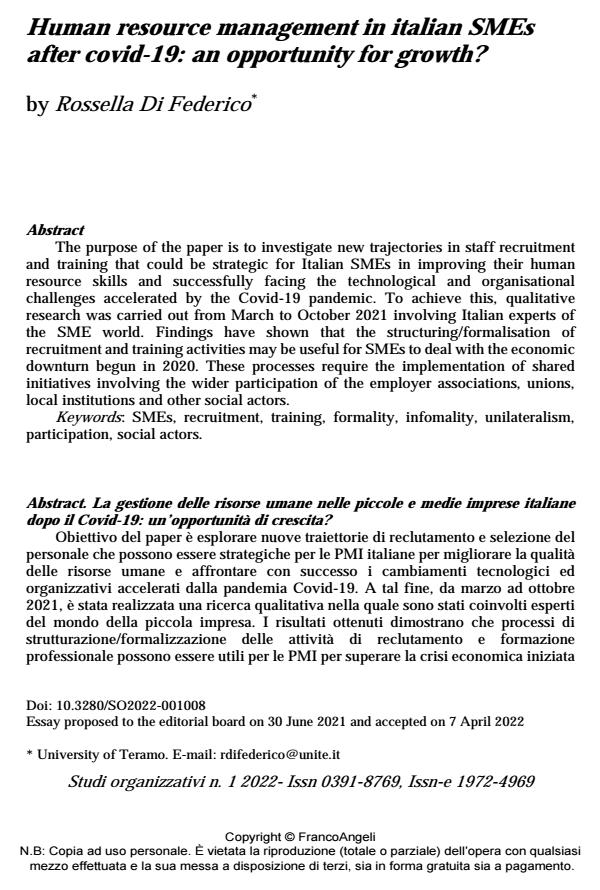Human resource management in italian SMEs after covid-19: an opportunity for growth?
Journal title STUDI ORGANIZZATIVI
Author/s Rossella Di Federico
Publishing Year 2022 Issue 2022/1
Language English Pages 22 P. 177-198 File size 213 KB
DOI 10.3280/SO2022-001008
DOI is like a bar code for intellectual property: to have more infomation
click here
Below, you can see the article first page
If you want to buy this article in PDF format, you can do it, following the instructions to buy download credits

FrancoAngeli is member of Publishers International Linking Association, Inc (PILA), a not-for-profit association which run the CrossRef service enabling links to and from online scholarly content.
The purpose of the paper is to investigate new trajectories in staff recruitment and training that could be strategic for Italian SMEs in improving their human resource skills and successfully facing the technological and organisational challenges accelerated by the Covid-19 pandemic. To achieve this, qualitative research was carried out from March to October 2021 involving Italian experts of the SME world. Findings have shown that the structuring/formalisation of recruitment and training activities may be useful for SMEs to deal with the economic downturn begun in 2020. These processes require the implementation of shared initiatives involving the wider participation of the employer associations, unions, local institutions and other social actors.
Keywords: SMEs, recruitment, training, formality, infomality, unilateralism, participation, social actors.
Rossella Di Federico, Human resource management in italian SMEs after covid-19: an opportunity for growth? in "STUDI ORGANIZZATIVI " 1/2022, pp 177-198, DOI: 10.3280/SO2022-001008